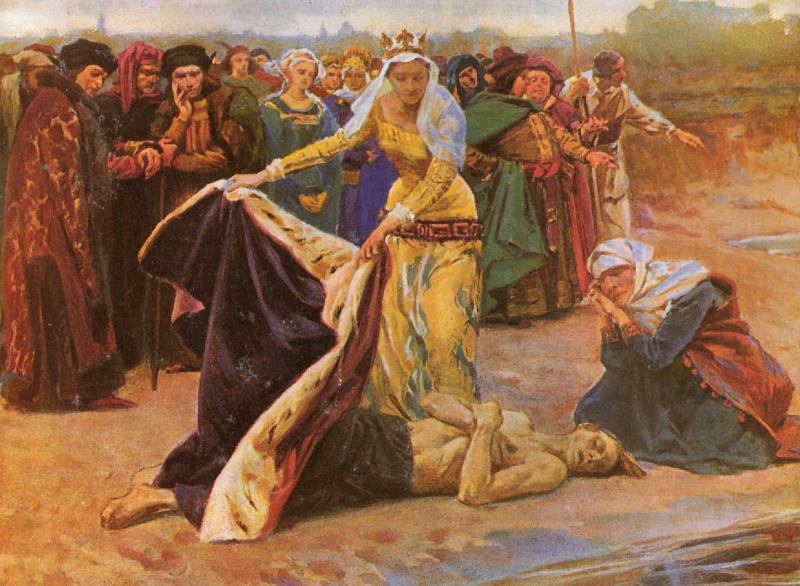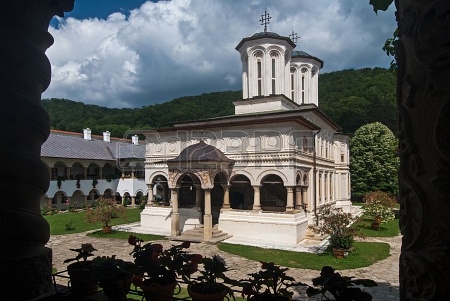
Piotr Stachiewicz (Polish, a cycle of illustrations portraying the life and legends of Jadwiga, “King” of Poland.) This scene depicts a drowned man she brought back to life by draping her cloak over his wet corpse.
Jadwiga, also known as Hedwig (without an “angry inch!”), was the first female monarch of the Kingdom of Poland, reigning from October 16, 1384 until her death (July 1399). Jadwiga was crowned “king,” reflecting the Polish lords’ opposition to her intended future husband, William; she married someone else instead but remained “king” herself.
Her marriage made the union of Poland and Lithuania possible, establishing a large state in eastern Central Europe. She established new hospitals, schools and churches, and restored older ones that had fallen into ruin. Jadwiga promoted the use of Polish rather than Latin in church services, especially the singing of hymns in Polish. She ordered that the Bible be translated into Polish. Jadwiga bought houses along a central street of Kraków in order to establish the university there. In accordance with Jadwiga’s last will, the university was partially financed through the sale of her jewels. Her charity led many to consider her a saint. She is said to have brought the dead to life on at least one occasion (see illustration above).
Poland has always been a source of fascinating tales and legends. Vampire stories were more common in Poland than in Transylvania (Romania). Vampire graves in Poland are recognised by the positioning of the body in the tomb: those thought to be vampires were buried face down, in the fetal position, with their heads cut off and placed between their legs, with wooden or metal pegs and studs piercing their bodies, or in a grave held down by rocks. Many such graves have been discovered in different parts of Poland. Underneath Kraków’s main square researchers discovered female skeletons laid in the fetal position, and in another town the body of a woman was found with her hand cut off and placed in her mouth.

